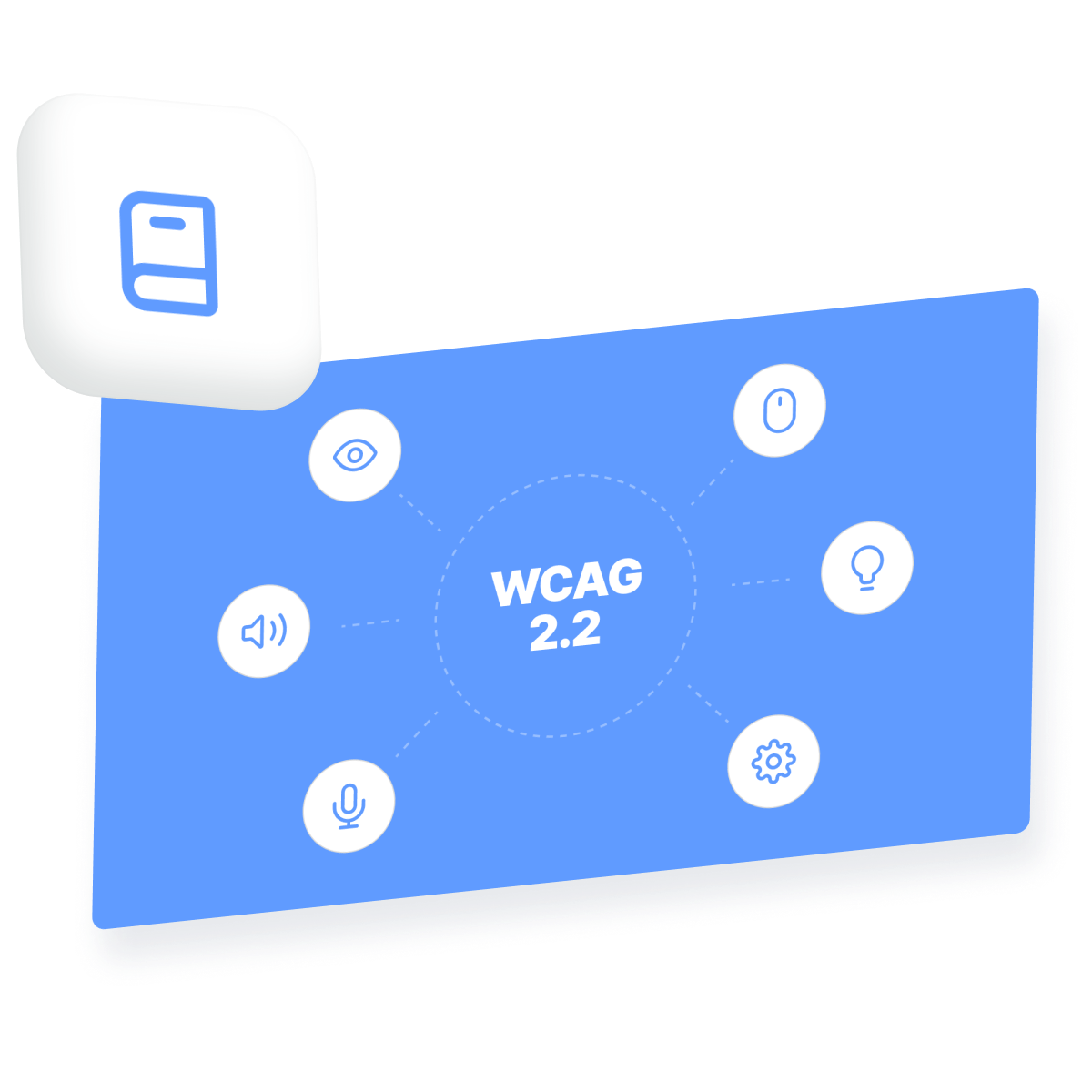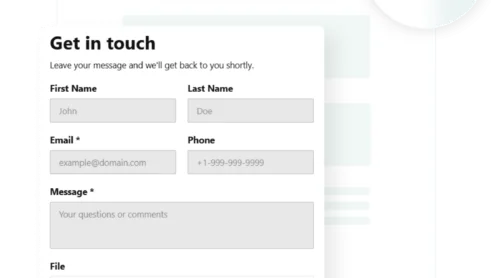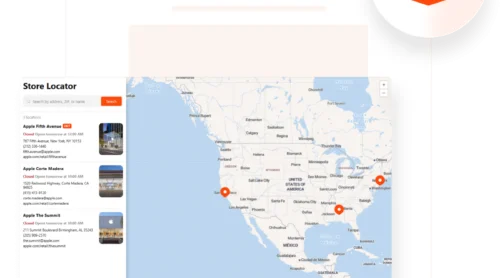The European Accessibility Act (EAA) is a directive introduced by the European Union to improve accessibility across key products and services in the EU market. Its primary goal is to ensure that people with disabilities can access digital content and services on an equal basis with others.
With the rapid shift to online platforms, websites and mobile applications have become critical gateways to everyday services — from ecommerce and banking to ebooks and transportation. The EAA extends the concept of accessibility beyond physical infrastructure to the digital world, making it a crucial regulation for businesses that operate online.
This article aims to explain what the EAA is, why it matters for digital accessibility, and what steps businesses need to take to ensure their websites are EAA-compliant before the enforcement deadline. Whether you’re a developer, business owner, or compliance officer, this guide will help you prepare for the upcoming accessibility requirements.
What Is the European Accessibility Act?
The European Accessibility Act is a piece of legislation introduced by the European Union to ensure that a wide range of products and services — including websites and digital tools — are accessible to people with disabilities. It is designed to remove barriers in the digital and physical environment, creating a more inclusive and equal European market.
Adopted in 2019, the directive went into effect on June 28, 2025. The EAA is legally binding and applies across all EU countries.
The Act was created as part of the EU’s broader commitment to the European Pillar of Social Rights and the United Nations Convention on the Rights of Persons with Disabilities (UNCRPD). Its main objective is to harmonize accessibility standards across the European single market, making it easier for businesses to operate across borders and for consumers to access services independently.
When it comes to web and digital services, the EAA aligns closely with the Web Content Accessibility Guidelines (WCAG) 2.2, particularly the Level AA standard. These guidelines are globally recognized and outline how to make web content more usable for people with visual, auditory, motor, and cognitive impairments.
Why the EAA Matters for Digital Accessibility
The European Accessibility Act plays a vital role in promoting digital inclusion across the EU. By requiring that websites, apps, and other digital services be accessible, the EAA empowers people with disabilities to navigate, interact with, and benefit from the digital world just like anyone else. This includes individuals with visual, auditory, motor, or cognitive impairments who often face barriers online.
As more essential services move online — from healthcare to banking and shopping — the need for inclusive digital access has become a fundamental right, not a luxury. Inaccessible websites can exclude millions of users from performing daily tasks, making the internet a source of frustration instead of empowerment.
Beyond ethics and inclusion, digital accessibility has broader business and legal implications:
- Improved user experience (UX). Accessible websites are easier to use for everyone, including users on mobile devices or with slower connections.
- Reduced legal risk. Non-compliance with the EAA can result in penalties, legal challenges, or public scrutiny.
- Stronger brand reputation. Companies that prioritize accessibility are seen as inclusive, forward-thinking, and socially responsible.
- Better SEO. Accessible websites often perform better in search rankings thanks to structured content and metadata.
Accessible design doesn’t just benefit users with disabilities — it improves usability, engagement, and satisfaction for every visitor to your site.
Which Businesses and Websites Must Comply?
The European Accessibility Act applies to a wide range of businesses that offer digital or technology-driven services within the European Union. The focus is on service providers whose offerings are considered essential for public life or cross-border commerce.
Below is a breakdown of the types of businesses and services required to meet EAA accessibility standards:
| Business Type | Examples of Affected Services | Compliance Focus |
|---|---|---|
| Ecommerce | Online shops, product catalogs, checkout systems | Accessible navigation, screen reader support, keyboard operability for all purchase steps |
| Banking & Finance | Online banking, payment gateways, financial apps | Form labeling, secure authentication that works with assistive tech, data table accessibility |
| Transport | Ticket booking sites, transport schedules, travel apps | Clear content structure, real-time updates with accessible formatting, alternative text |
| Telecommunications | Billing portals, support chat, user account dashboards | Text alternatives for visuals, accessible documents, operable interface elements |
| Media & Publishing | eBook platforms, video streaming, news portals | Subtitles for video, audio descriptions, contrast ratio for reading interfaces |
| Public Sector | Government websites, public information portals | Already regulated under Directive (EU) 2016/2102; must meet similar WCAG-based standards |
However, there is an important exception: the EAA does not apply to micro-enterprises — businesses with fewer than 10 employees and an annual turnover or balance sheet total of less than €2 million. While they are exempt from legal obligation, they are still encouraged to follow accessibility best practices voluntarily.
Another critical point is that the EAA is intended to harmonize accessibility across the entire EU market. If your business offers digital services to consumers in more than one EU member state, your website must comply with the EAA regardless of where your company is based within the EU.
EAA Compliance Requirements for Websites
To comply with the European Accessibility Act, websites must follow the WCAG 2.2 Level AA standards. These guidelines are designed to ensure equal access for users with disabilities by addressing how web content is structured, presented, and interacted with.
Accessibility under the EAA is not only about being inclusive — it’s also a legal necessity for many businesses operating in the EU. While some accessibility features may seem like small design tweaks, they can significantly affect how individuals with different impairments experience your site. From a technical standpoint, these requirements span visual, auditory, motor, and cognitive aspects of the user experience.
Unlike the Web Accessibility Directive, which primarily affects public sector websites, the EAA broadens its scope to include private-sector services such as ecommerce, banking, and media. That means these compliance requirements affect both frontend user interaction and backend content structure. Adopting these measures helps avoid legal risks, expands your audience reach, and aligns your business with EU regulatory expectations.
Below are the key website requirements under the EAA:
- Text alternatives for non-text content. Provide descriptive alt text for all images, icons, and media so screen readers can convey their meaning to visually impaired users.
- Keyboard accessibility. All interactive elements — such as buttons, menus, sliders, and forms — must be fully usable without a mouse.
- Readable and distinguishable text. Ensure sufficient color contrast (minimum 4.5:1), scalable fonts, and legible typefaces to support users with visual impairments or dyslexia.
- Adaptable and responsive design. Content must display properly across all screen sizes and orientations without breaking usability or hiding essential information.
- Semantic structure and navigation. Use heading levels properly, apply ARIA roles where necessary, and organize content with clear regions (e.g. <main>, <nav>, <footer>).
- Accessible forms. Label every form field appropriately, use fieldsets and legends where needed, and provide real-time error feedback that can be read by screen readers.
- Captions and transcripts for media. Include synchronized captions for videos and transcripts for audio to make multimedia content accessible to deaf and hard-of-hearing users.
- Consistent interface and navigation. Menus, buttons, and links should appear in the same location across pages and behave predictably to reduce cognitive load.
- Error prevention and correction. For tasks like form submissions or checkout processes, users should be notified of errors and offered clear instructions to fix them.
For businesses that outsource their development, it’s important to ensure that both designers and developers are trained in accessible practices. Templates, CMS plugins, and third-party integrations should also be evaluated for compliance — an inaccessible shopping cart or chat widget could lead to an otherwise compliant site falling short.
Finally, accessibility is not a “set it and forget it” requirement. Any updates to your website — from content changes to design overhauls — must be tested for continued compliance. Integrating accessibility into your workflow and content governance strategy is essential for long-term success under the EAA.
How to Make Your Website EAA Compliant
Bringing your website into compliance with the European Accessibility Act involves a strategic, multi-phase approach. This isn’t just about making a few visual changes — it’s about creating a digital experience that works seamlessly for all users, regardless of their abilities or the technology they use.
1. Audit Your Current Website
The first and most crucial step is to assess the current state of your website’s accessibility. A thorough audit helps you understand where your site fails to meet WCAG 2.2 Level AA standards and gives you a roadmap for improvement. This evaluation can be conducted internally or by hiring professionals — but the key is to make it comprehensive.
- Page structure and HTML semantics: Review whether the site uses proper heading levels (h1 through h6) and semantic elements like nav, main, and footer. These help screen readers and assistive devices interpret and navigate the page correctly.
- Color contrast and typography: Check all text and background color combinations. A contrast ratio of at least 4.5:1 is required for normal text, and 3:1 for large text. Also, ensure font styles and sizes are readable and scalable.
- Keyboard navigation: Test whether users can move through all interactive elements using just the keyboard. Focus indicators should be visible, and no component should trap the user without an escape option.
- Image and media alternatives: Identify images missing descriptive alt text, videos without captions, or audio without transcripts. These are essential for users with visual and hearing impairments.
- Forms and input fields: Review whether all form fields are labeled clearly, error messages are descriptive, and input instructions are easy to follow — especially for screen reader users.
Use both automated tools and manual testing to ensure a complete picture. Automated tools can catch code-level issues, while manual testing reveals real-world usability problems that machines might miss.
2. Fix Accessibility Issues
After identifying your site’s weaknesses, the next phase is implementation. Fixing accessibility issues often involves both content and code — you may need help from designers, developers, or CMS managers depending on your website setup. Address each issue methodically, starting with high-impact changes that affect usability.
- Link and button clarity: Replace ambiguous link text like “Read more” or “Click here” with descriptive phrases that explain the destination, such as “Read more about our pricing plans”. This improves navigation for both screen reader and keyboard users.
- Visible focus states: Ensure that keyboard users can see which element is currently focused by adding or customizing the outline styles. This prevents confusion and streamlines navigation.
- Screen reader enhancements: Add ARIA attributes to dynamic content (e.g., tabs, modals, alerts) to make sure screen readers detect and announce changes properly. Use aria-live, aria-label, and aria-hidden thoughtfully.
- Third-party content fixes: Check widgets, chat plugins, video embeds, and external tools for accessibility. If they are non-compliant, replace them with accessible alternatives or add fallback solutions (like text links or additional labels).
Keep in mind that fixing accessibility issues is not just about adhering to technical checklists — it’s about improving the real-world experience for all users. Be sure to test every update with assistive technologies before deploying it live.
3. Maintain Accessibility Continuously
Compliance isn’t a one-time task. Every change you make to your website — whether it’s new content, design updates, or added functionality — must be reviewed for accessibility. Building an internal process for ongoing checks ensures your website doesn’t fall out of compliance over time.
- Embed accessibility into workflows: Make accessibility reviews a mandatory part of your development and content publishing process. Use checklists and assign accessibility roles across your team to ensure no area is overlooked.
- Perform scheduled audits: Set recurring monthly or quarterly accessibility audits to catch regressions early. Track issues over time, document fixes, and build accountability through internal reporting.
- Train your team: Provide training for designers, content creators, and developers on accessible best practices. The more your team understands accessibility, the easier it will be to stay compliant by default.
Ultimately, accessibility should become part of your website’s culture — not just a compliance requirement, but a key to offering a better experience to everyone.
Accessibility Testing and Compliance Tools
Below is a comparison table of tools you can use to monitor, test, and improve your site’s accessibility — from automated audits to manual testing environments.
| Tool | Description | Use Case |
|---|---|---|
| Elfsight Accessibility Widget | A website accessibility widget that adds UI enhancements like contrast toggles, font size adjustments, and keyboard navigation support. | Quick start for improving accessibility and providing users with customization controls. |
| WAVE | A browser-based tool that highlights accessibility issues directly on your pages. | Quick visual scanning of contrast, headings, alt text, and ARIA usage. |
| Axe DevTools | A Chrome extension that performs in-depth WCAG audits and provides code-level feedback. | Ideal for developers during testing and QA stages. |
| Google Lighthouse | Built-in tool in Chrome DevTools that checks accessibility, performance, and SEO. | Good for baseline accessibility scores and performance snapshots. |
| NVDA / VoiceOver | Screen readers for Windows and macOS to test actual user experience with assistive tech. | Essential for manual testing and real-world validation. |
Looking to improve inclusivity and meet accessibility standards on your website? Elfsight’s accessibility widget offers a simple yet powerful way to comply with ADA, WCAG, and EAA regulations — all while making your content friendlier for users with different needs.
- Ready-to-use modes for Low Vision, Color Blindness, Dyslexia, and more
- Integrated tool for checking your website’s accessibility health
- Works seamlessly across all platforms and supports over 20 languages
- Design and position can be easily customized
Follow these quick steps to embed the widget on your website:
- Create your widget. Visit the widget’s editor and personalize the settings to match your needs.
- Grab the embed code. Once setup is complete, click “Add to website” and copy the code provided.
- Implement the code. Paste the code snippet into your website’s HTML or embed section!
Want to see how it looks in action? Build your accessibility widget right now!
Hire an Expert or Use a Widget?
If accessibility isn’t your in-house team’s specialty, you may want to bring in external help. Two main options exist — hiring a consultant or implementing a compliance widget — and each has its place depending on your needs and budget.
- Hiring an accessibility expert. Consultants can conduct professional audits, implement advanced fixes, train your staff, and ensure your site fully aligns with WCAG standards. This is ideal for complex websites or businesses aiming for long-term accessibility leadership.
- Using a compliance widget. Tools like the Elfsight ADA Compliance Widget can instantly improve the accessibility interface without requiring changes to the site’s core code. These widgets add features such as font scaling, color inversion, and focus highlighting. While not a complete solution, they serve as a valuable accessibility enhancement layer.
Penalties for Non-Compliance
Failing to comply with the European Accessibility Act (EAA) can result in a range of penalties — legal, financial, and reputational. While the exact fines and enforcement mechanisms may vary slightly from country to country, EU member states are required to set up and apply effective penalties that reflect the seriousness of the offense.
Consequences for non-compliance may include:
- Financial penalties: Regulatory authorities in each EU country will be authorized to impose fines on businesses that fail to meet EAA accessibility requirements. These fines could be one-time or ongoing, depending on the severity and duration of the non-compliance.
- Legal actions and injunctions: Individuals and advocacy organizations may file complaints or lawsuits against non-compliant businesses. Authorities may issue formal warnings or legally binding instructions to make corrections within a specified time frame.
- Public exposure and reputational damage: Companies found to be inaccessible may face negative press, loss of consumer trust, and exclusion from public contracts or partnerships with government bodies.
Although the EAA was only enforced starting in June 2025, similar accessibility regulations had already been in place — offering a preview of how strict enforcement may be. For example:
- France: Government websites are required to publish an accessibility declaration and can be fined for failing to meet compliance standards. In 2021, the French Ministry for Digital Affairs warned several public bodies after complaints from disability advocates.
- Germany: The German Equal Opportunities for Persons with Disabilities Act has been used to demand remediation of inaccessible websites. Fines are possible if warnings are ignored.
- Italy: The “Stanca Act” enforces accessibility in public digital services. Violations can lead to exclusion from government tenders and grant programs.
These examples show that enforcement isn’t just theoretical — authorities across Europe are actively responding to inaccessibility and have already established frameworks to ensure compliance. The EAA strengthens and unifies these efforts across all member states.
FAQ
Does the European Accessibility Act apply to websites outside the EU?
Is EAA compliance required for mobile apps as well?
Are employee portals or intranet systems covered under the EAA?
Can I use AI tools for automatic compliance?
Conclusion
Ensuring your website complies with the European Accessibility Act is more than just a legal obligation — it’s a step toward digital equality, improved usability, and greater market reach. By aligning with WCAG 2.2 Level AA standards, businesses can create online experiences that accommodate everyone, including users with disabilities.
Whether you’re targeting European customers or simply want to offer a better experience to all users, EAA compliance will position your website as both responsible and competitive in the evolving digital landscape.







